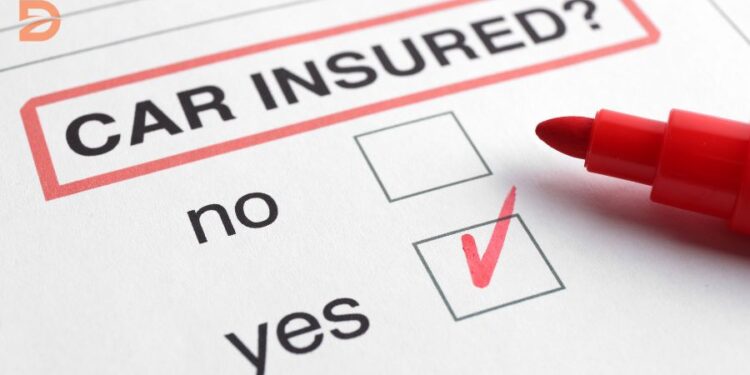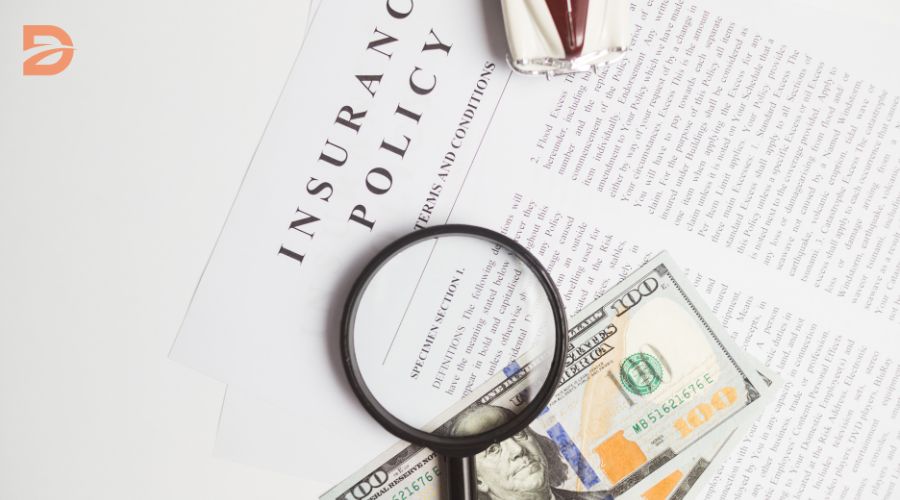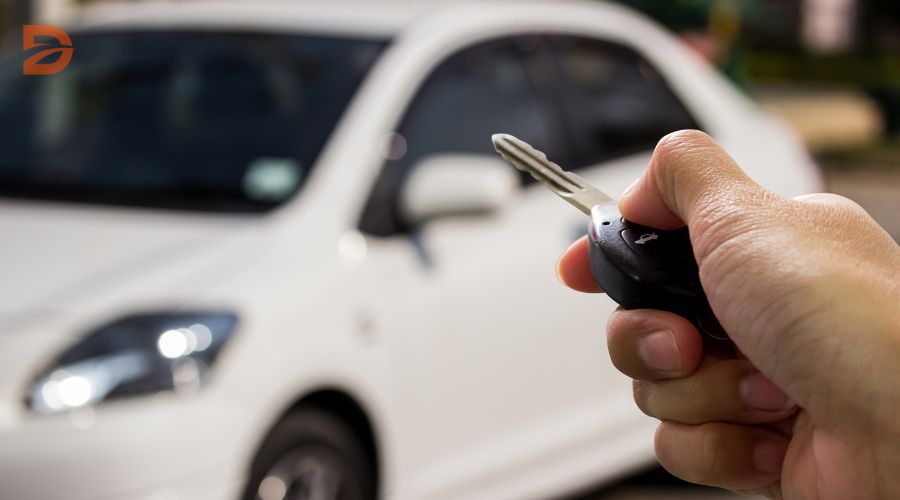Are you tired of paying high car insurance premiums? What if we told you that the safety features in your vehicle could significantly reduce your insurance costs? In this article, we’ll explore how advanced vehicle safety technologies can help you save money on your car insurance, challenging the common belief that insurance rates are solely based on factors outside your control.
Key Takeaways
- Safety ratings from organizations like NHTSA and IIHS can impact insurance premiums.
- Vehicles with higher safety ratings typically have fewer and less expensive claims, leading to lower insurance costs.
- Standard safety features like collision warning, lane departure warning, and automatic emergency braking can potentially lower insurance rates.
- Anti-theft devices and the size of your vehicle can also influence insurance premiums.
- Driving behavior, location, and other personal factors play a role in insurance costs alongside safety features.
The Impact of Safety Ratings on Insurance Costs
Vehicle safety ratings provided by organizations like the National Highway Traffic Safety Administration (NHTSA) and the Insurance Institute for Highway Safety (IIHS) are crucial factors that insurance companies consider when determining insurance premiums. These ratings measure a vehicle’s crash test performance and the relative injury risk for occupants compared to other models in the same class.
Understanding Vehicle Safety Ratings
The highest safety ratings are awarded to vehicles with the lowest injury risk. Insurers factor in these safety ratings, and sometimes their proprietary ratings, when calculating insurance costs. Vehicles with higher safety ratings are generally cheaper to insure because they are statistically less likely to be involved in accidents and have less expensive claims.
The Relationship Between Safety Ratings and Insurance Premiums
However, the relationship between safety ratings and insurance premiums is complex, as other factors like repair costs can also influence insurance rates. For example, a study found that cars with higher safety ratings can reduce insurance premiums by up to 20%. The Subaru Ascent, Honda Odyssey, and Hyundai Santa Fe with top safety ratings have average insurance costs ranging from $1,300 to $1,600 per year, while vehicles like the Jeep Wrangler, Nissan Versa, and Mitsubishi Mirage with lower safety ratings have average insurance costs ranging from $2,000 to $2,300 per year.
Ultimately, the safety features and crash test performance of a vehicle play a significant role in determining its insurance costs, as insurers aim to minimize their financial risk by offering lower premiums for safer cars.
Vehicle safety features, insurance premiums
When it comes to car insurance, the safety features in your vehicle can play a significant role in determining your premiums. Many insurance providers offer discounts to drivers whose cars come equipped with advanced safety technologies that help reduce the risk of accidents and minimize the severity of crashes.
Some of the most common safety features that can lead to insurance premium discounts include:
- Collision warning systems that alert drivers to potential collisions and can automatically apply the brakes
- Blind spot detection that warns drivers of vehicles in their blind spots
- Anti-lock brakes (ABS) that prevent the wheels from locking up during sudden stops
- Adaptive cruise control that automatically adjusts the vehicle’s speed to maintain a safe following distance
- Adaptive headlights that swivel to illuminate turns and curves
- Lane-keeping assistance that alerts drivers when they drift out of their lane
Insurance providers often offer lower rates to drivers with vehicles equipped with these types of advanced safety features, as they statistically have fewer and less costly claims. In fact, according to the National Highway Transportation Safety Administration, automated emergency braking (AEB) and forward collision warning (FCW) have reduced rear-end collisions by 49% when made standard on vehicles.
| Safety Feature | Estimated Discount Range | Typical Cost |
|---|---|---|
| Anti-lock Brakes (ABS) | 5-10% | Standard on most new vehicles |
| Adaptive Cruise Control | 5-15% | $2,000 – $2,500 |
| Blind Spot Monitoring | 5-10% | Varies, often part of the technology package |
| Forward Collision Warning | 10-15% | Standard on many new vehicles |
By understanding the impact of vehicle safety features on insurance premiums, drivers can make more informed decisions when purchasing a new car and potentially save money on their car insurance costs.
Other Factors Influencing Insurance Costs
While vehicle safety features and ratings play a crucial role in determining insurance premiums, insurance companies consider a variety of other factors when calculating the cost of coverage. The size and weight of a vehicle, as well as the presence of anti-theft devices, can significantly impact insurance rates.
Vehicle Size and Anti-Theft Devices
Larger vehicles, such as SUVs and trucks, often have better crashworthiness compared to smaller cars, which can lead to lower insurance costs. However, the increased repair or replacement costs for luxury vehicles with advanced safety features may offset this advantage. On the other hand, vehicles equipped with anti-theft devices like alarms and tracking systems can qualify for discounts, as they reduce the risk of theft and vandalism.
Driver History and Location
A driver’s history, including accidents and traffic violations, is another key factor that insurance providers consider. Drivers with clean records typically enjoy lower premiums, while those with a history of at-fault accidents or speeding tickets may face higher rates. Additionally, the location where the vehicle is primarily garaged can impact insurance costs, with some states and regions being more expensive than others.
Insurance companies use a comprehensive risk assessment model that takes all of these factors into account when calculating premiums. By understanding the various elements that influence insurance costs, drivers can make informed decisions to optimize their coverage and potentially save on their insurance expenses.
Maximizing Safety Feature Discounts
To get the most value from your vehicle’s safety features, it’s crucial to compare insurance quotes and shop around. Insurance providers offer varying levels of discounts for different safety technologies, so finding the best rates requires a little legwork.
Comparing Quotes and Shopping Around
When purchasing a new car, be sure to consider the potential insurance savings alongside the upfront costs of advanced safety features. Comparing the difference in premiums and the long-term savings can help determine if the added features are worth the investment. Additionally, shopping around for insurance, even if you’re satisfied with your current coverage, can uncover new opportunities to save money on your premiums.
- The more airbags a vehicle has, the higher the insurance discount. Having dual front and side airbags leads to a greater discount compared to a vehicle with only front airbags.
- Some car insurance carriers discount liability coverage based on the presence of certain safety features.
- States like Florida, New Jersey, and New York require insurers to provide discounts for cars equipped with anti-lock brakes.
- Car insurance providers may offer discounts for vehicles with electronic stability control (ESC) in some states.
- Discounts on seat belt usage or automatic seat belts can apply to personal injury protection (PIP) and medical payment coverage.
- Daytime running lights may result in a discount on liability, PIP, medical payments, and collision coverage.
- Insurers might offer discounts on vehicles with crash-resistant doors to reduce collision claims.
- Anti-theft features like an anti-theft system can lower comprehensive coverage premiums.
While some advanced safety features like lane departure warnings or collision prevention assistance may not currently come with insurance discounts, they are expected to become standard in the future, leading to associated savings on premiums.
| Safety Feature | Average Discount Range |
|---|---|
| Airbags (dual front and side) | 10% – 30% |
| Anti-lock Brakes | 5% – 15% |
| Electronic Stability Control | 5% – 15% |
| Anti-theft Systems | 10% – 25% |
| Daytime Running Lights | 3% – 10% |
By taking the time to compare quotes and shop around, drivers can maximize the safety feature discounts on their insurance premiums and shop for insurance more effectively.
Conclusion
In conclusion, advanced vehicle safety features can significantly reduce insurance premiums by lowering the risk of accidents and claims. Safety ratings, collision avoidance systems, anti-lock brakes, and other technologies have been pivotal in improving road safety and reducing the number of car crashes. By owning a vehicle equipped with these vehicle safety features, drivers can take advantage of insurance discounts and save money on their insurance premiums over the life of the vehicle.
When shopping for a new car or insurance, it’s crucial to carefully consider the safety features and their potential impact on your insurance costs to maximize your cost savings and accident prevention. Insurers place a high value on the safety features of a vehicle, and those with comprehensive safety packages often receive lower insurance rates due to the reduced risk of accidents and claims.
By prioritizing vehicle safety features and taking advantage of the available insurance discounts, drivers can not only enhance their safety but also enjoy significant savings on their car insurance premiums. This win-win situation highlights the importance of aligning your vehicle choice and insurance coverage to optimize both your safety and financial well-being on the road.
FAQ
What are the key factors that insurance companies consider when determining insurance premiums?
Insurance companies consider a variety of factors when calculating insurance premiums, including vehicle safety ratings, advanced safety features, the size and weight of the vehicle, anti-theft devices, the driver’s history, and the location where the vehicle is primarily garaged.
How do vehicle safety ratings impact insurance costs?
Vehicles with higher safety ratings from organizations like the NHTSA and IIHS are generally cheaper to insure because they have a lower risk of being involved in accidents and having expensive claims. Insurance companies factor in these safety ratings, as well as their proprietary ratings, when determining insurance premiums.
What advanced safety features can lead to lower insurance premiums?
Many newer vehicles come standard with features that can help prevent accidents, such as forward collision warning, lane departure warning, blind spot detection, and automatic emergency braking. Insurance providers often offer discounts to drivers with vehicles equipped with these types of advanced safety technologies.
How do other vehicle characteristics and driver factors impact insurance costs?
In addition to safety features and ratings, the size and weight of a vehicle, the presence of anti-theft devices, a driver’s accident, and violation history, and the location where the vehicle is primarily garaged can all significantly influence insurance premiums.
How can drivers maximize the insurance savings from vehicle safety features?
To get the most insurance savings from safety features, it’s important to compare quotes from multiple providers and shop around periodically. Insurance companies offer varying levels of discounts, so getting personalized quotes can help identify the best rates. When purchasing a new vehicle, consider the potential insurance savings alongside the upfront costs of advanced safety features.











